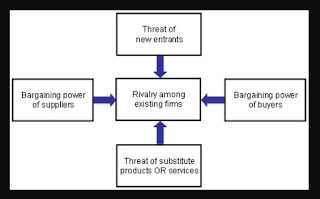I was at the airport in Denver, wrestling with a crossword puzzle (10 down, 9 letters, begins with I and ends with Y, clue: morally upright) while waiting to board a Southwest Airlines flight, when I heard the person sitting directly behind me stage-whisper this advice to his companion:
It doesn’t matter whether you actually have a disability—they can’t ask you for proof—just go up and request a pre-boarding document like I did. They have to give you one. Why should you wait to board with the C-group? We can sit together in better seats if we pre-board.Intrigued, I turned around to look at the co-conspirators. The speaker was a tall, tanned older guy who looked like he had just come off the golf course. His companion was shorter but could have been a member of the other guy’s foursome. Their objective? Gaming the Southwest boarding process so they could get on board before passengers who had checked in early or paid extra for early boarding privileges. The shorter guy initially demurred, but when his companion gestured toward the ever-swelling group of pre-boarders assembling near the jetway, he acted. He was back in a minute with a pre-boarding document. Grinning and fist-bumping, he and his pal enthusiastically joined the pre-boarding scrum.
A few minutes later, my boarding group was announced and we pushed onto the plane. The co-conspirators were parked side by side in the second row, the middle seat between them piled with their personal items to discourage anyone from claiming it. They looked very pleased with themselves.
While gaming the boarding process at the airport probably doesn’t register very high on the moral lapse scale, it is another example of how societal norms about acceptable human behavior are shifting. Remember being taught that behaving with integrity was critical to success in life? Our parents, our teachers, our clergy, our extended family, even our friends encouraged us to be honest, to make ethical choices, and to do the right thing. Maybe that’s what society expected of us, but it’s a new world out there, a world that rewards and celebrates achievement, but no longer obsesses about the behavior that enabled the achievement. It’s all about the outcome, not the process that produced the outcome. Imagine yourself back in school, taking a math test, writing down answers and not having to show your work calculations—it’s like that! Society admires people who win, and if those winners are clever or devious enough to win by taking advantage of shortcuts, cheats or hacks to beat the system, we often admire them even more.
While the “morally indifferent” behavior exhibited by the pre-boarders was disappointing, low-integrity people who operate without any moral compass at all tend to act out much more egregiously, and in the work world that can be very challenging. I am thinking of folks I worked with over the years who, by many measures, enjoyed tremendous success even though they routinely played it fast and loose when it came to honesty, integrity, and doing the right thing. They had no rules, no limits, no honor, no shame, yet they were often celebrated as winners. They lied, and cheated, and misrepresented, and intentionally undermined their colleagues. Yet they were showered with praise, promotions, and rewards-- behavior reinforcement which helped to make them even bolder and more committed to their strategy. Sure, a couple got called out or got careless and eventually crashed and burned, but I still remember the other ones—the ones who got away, who behaved callously, immorally, and unethically yet still ended up “winning.”
It’s difficult not to wonder how that happens. Why do employers tolerate low-integrity employees who behave badly? It might be a lack of attentiveness, or a leadership/management failure, or even a deliberate decision—intentionally excusing bad behavior because of “good” results. But experts such as Dr. Cameron Sepah and Jack Welch argue that companies should not tolerate “high-performing” employees who behave badly. Imagine a two-by-two with Performance as the Y-axis and Behavior as the X-axis. Sepah recommends companies deal with employees in each quadrant as follows:
His message is clear and it tracks with Welch’s—employees who behave badly must be rehabilitated or removed, not tolerated. But what, exactly, is bad behavior, and how capable and willing are executives to identify it and intervene? It’s often easier and more convenient to take a consequentialist view of behavior, where the consequences of a person’s conduct are the basis for any judgment about the conduct, which means behavior is only bad if the result is bad (i.e., the end justifies the means). Yet Peter Drucker tells us that if bad behavior results from the absence of character and integrity, that’s a weakness that cannot be cured:
By themselves, character and integrity do not accomplish anything. But their absence faults everything else. Here, therefore, is the one area where weakness is a disqualification by itself rather than a limitation on performance capacity and strength.For more on this topic, you might enjoy reading Amy Rees Anderson’s Forbes article Success Will Come and Go, But Integrity is Forever, but let’s close with Warren Buffet’s tongue-in-cheek description of the importance of integrity in the workplace:
Somebody once said that in looking for people to hire, you look for three qualities: integrity, intelligence, and energy . And if you don’t have the first, the other two will kill you. You think about it; it’s true. If you hire somebody without [integrity], you really want them to be dumb and lazy.So don’t hire low integrity employees, but if you must, make sure they are also dumb and lazy!
Dean K. Harring is a retired executive who now enjoys his time as an advisor, board member, educator, and watercolor painter. He can be reached at dean.harring@gmail.com or through LinkedIn or Harring Watercolors



